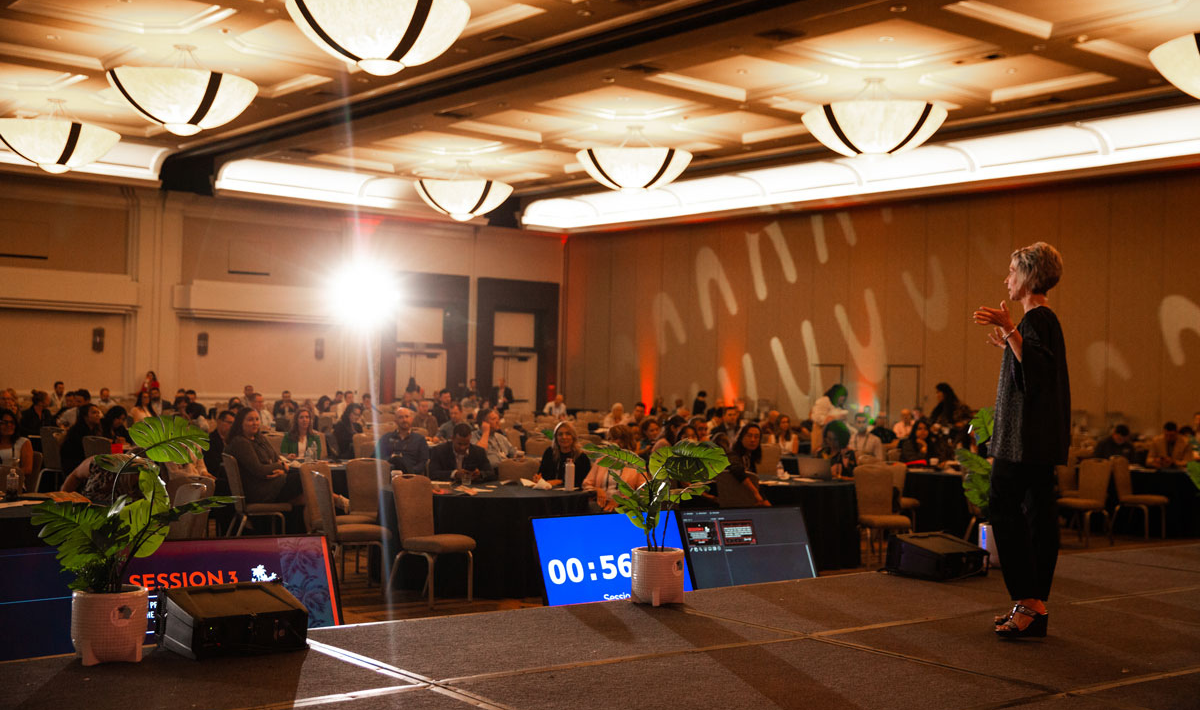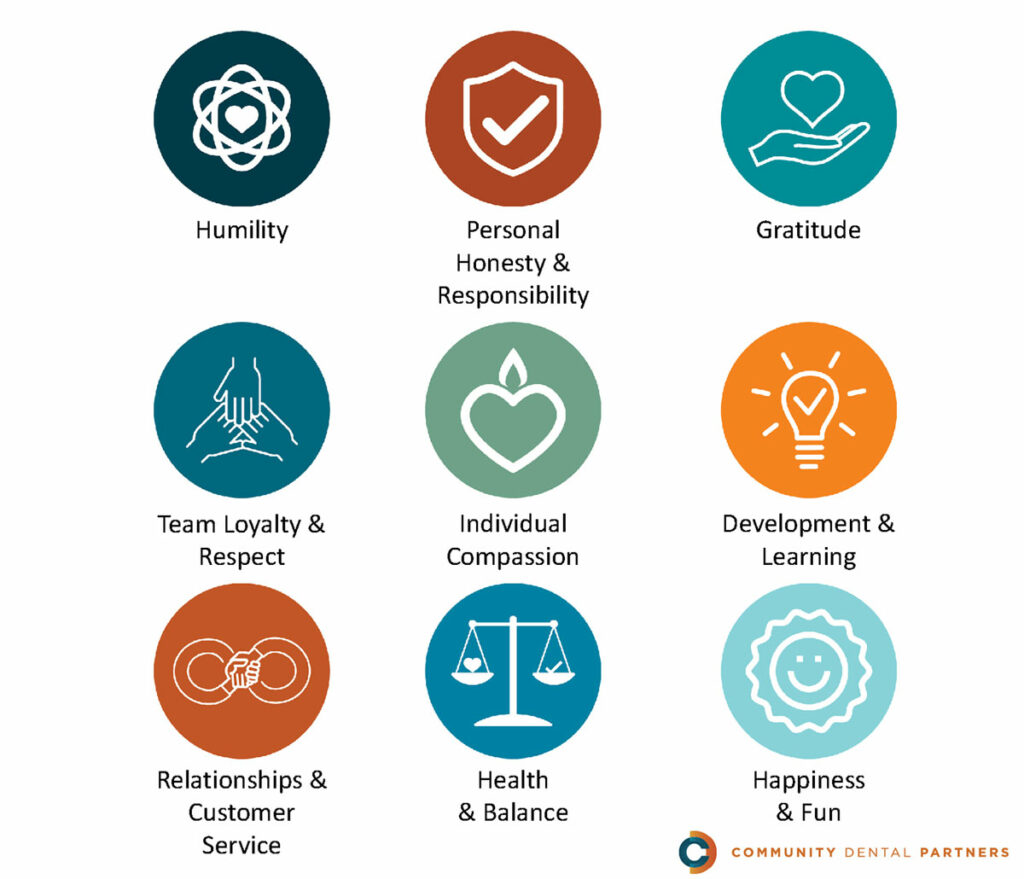Jackie Brown tackles the six proven systems to destroy quiet quitting.
By Daniel Beaird
It’s all about the people for Jackie Brown. As the chief human resources officer for Community Dental Partners (CDP) in Denton, Texas, she’s passionate about its team-building core and culture. Bringing people together who are humble, honest, and work hard toward their goals is very rewarding.
But how does she do it? Through six proven ways to take your team from checked-out, unmotivated flight risks to happy, productive, self-managing bosses.
1. RECRUIT
According to Brown, over 20% of employees who changed jobs last year applied for a new job because they didn’t like their company’s culture.
“You’re spinning your wheels if you’re not creating a culture people want to join,” she said.
It must be ingrained in your meetings, in your staff, and in how you talk. It improves recruiting, reduces turnover, and lifts your bottom line.
“It’s not just pretty posters on the wall,” she said. “It’s in everything you do.”
Tell your story in different ways
Brown says to tell your story in your job postings and interviews through your company’s origin and your perspective on patients, team members, and clinicians. Feed them your mantra, set the tone, and generate excitement.
“You’re connecting with someone you’ve never seen before, so what are you doing to make yourself different,” she asked. “When they know who you are, you save a lot of time and effort.”
Posting on job boards and social media sites like Indeed, LinkedIn, Facebook, and Instagram are traditional ways to reach job seekers, but think outside of the box.
“For example, if you have an office in a rural community, everyone knows everyone else,” Brown said. “Are you posting your job on your community Facebook page or at the community center?”
How about a QR code in your front office so patients can see your job opportunities?
On TikTok, “The Bentist” is an orthodontist’s account from Plano, Texas that has over 14 million followers.
“Do you think he has a hard time getting people to work for him? I don’t think so,” Brown said. “People like videos and cool graphic designs. When they’re scrolling and scrolling on social media, they stop to look at videos and things that are eye-catching.”
Social media posts are easy. Take a photo or video on your phone. Upload it to a gif maker like Canva to edit it or add text. Then save it and upload it onto your social media platforms so that it draws attention to your posts.
Perks
Stand out from the competition. People want to be taken care of in a competitive market.
“Nearly 60% of job seekers say perks are a big factor when deciding to accept a job,” Brown said. “But let’s stop the sign-on bonuses and put that money back into the company where we can really make an impact.”
Referral bonuses serve as a powerful incentive for team members to actively participate in the recruitment process, Brown says. “Implement a leaderboard, show a timeline for a referral payment, and encourage new hires to bring a friend. Everyone loves a competition, and keeping the leader board out there where everyone has visibility to it, encourages a continued focus on recruiting.”
People who are referred tend to stay longer, according to the retention data. They want to work with people they know and like.
“People don’t leave jobs, they leave people,” Brown said. “They leave bad cultures.”
2. RETAIN
Connection, transparency, communication, and appreciation are the bedrock of a good culture.
“But it’s not just having cake on someone’s birthday. That’s fun but people want to feel connected to a bigger purpose,” Brown said.
Appreciation focuses on things that bring joy and inspiration to your team, and connection and transparency align with the mission, vision, and values your company shares with your team members. That’s communicated through everything – every meeting and conversation and all written communication.
“We have nine pillars at CDP and Team Loyalty and Respect is one of them,” Brown said. “If I have an employee coming in late, the conversation with that employee needs to include the culture and a talk about how Team Loyalty and Respect means we show up for each other. When you’re late, you’re impacting the team because they have to pick up the slack.”
CDP also has a Personal Responsibility pillar, so Brown discusses the employee’s responsibility to get up and get to work on time. A good team holds each other accountable and we hold ourselves accountable as well.
Intentionality in creating leaders
“Everything’s intentional in what we do,” she said.
CDP focuses on a different pillar each month, like Humility, in their morning meetings, every activity or prompt discussion is focused on that pillar. It’s a daily reminder that keeps everyone focused on the culture. Its “STRATE Talk” with its employees includes one-on-one conversations and role-playing situations on how to professionally talk through issues.
“For example, there will be conflict chairside and people don’t like conflict,” Brown said. “You need to be intentional about how you handle conflict. If you don’t deal with it, rumors start and that’s how your culture fails.”
Their nine pillars are in everything they do. Even their performance evaluations include a section where team members are encouraged to engage in self-reflection, identifying the pillar in which they believe they excel and recognizing areas within a specific pillar where they see potential for personal growth.
Brown emphasizes the deliberate effort to ensure that their culture permeates every aspect of the organization, highlighting the importance of recognizing each individual not merely as a worker, but as a leader in their respective roles. “We believe in the principle of leadership at every level, irrespective of one’s position. Our team members are aware of their leadership roles because we treat them as such, fostering an environment where higher standards are embraced. This approach cultivates a shared understanding of the significant impact each person has on the organization’s success, reinforcing our commitment to development, respect, and personal responsibility.”
3. REWARDS
Rather than trying to keep up with the crazy salaries we’ve seen offered over the last year, not to mention it’s probably not a sustainable business model, strategically plan where you spend your dollars and reward your teams for their efforts. But remember that any kind of rewards system must be defined by its ‘why’ and ROI. Reward what’s important, including:
- Retention/turnover bonus.
- Attendance bonus.
- Hitting goals/KPIs.
- Anniversary.
- Time frame: monthly, quarterly, annually.
- Recognition boards and shoutouts.
- Celebrating successes big and small.
“We started a new PTO program that gives PTO hours for each year of service for our team members. It adds to our overall expenses, but it helps lower turnover costs by increasing retention. So monitor your turnover and conduct employee surveys to see if you’re getting the return on the investment,” Brown said. “If you’re going to implement something, have a way to track it. Data speaks volumes.”
Perks at Work
CDP offers “Perks at Work” to their employees. This employee perks program offers savings, online classes, and personal development to members for free at perksatwork.com.
The Employee Pricing Program offers access to best-in-market pricing and loyalty points that can be redeemed when employees shop through “Perks at Work.” It also offers a community online academy with live classes for children and adults that can be viewed on-demand or live. “Perks at Work” also offers HR tools that support building a high-performance environment, so there is really something for everyone.
“Market these kinds of discounts to your employees,” Brown said. This is something you would want to include in a synopsis you give your employees each year outlining all the benefits you offer your people. “It’s important to communicate all the great things you do for your team members so that there is always a focus on the positives,” Brown said.
4. RESOURCES
Brown says all companies have these kinds of resources, but most don’t do a good job of touting them.
“Think about the things you do for your team members,” she said. “Make sure you’re branding that and marketing it like the Perks at Work program.”
Have all of your resources listed so your recruiting team can deliver them to prospective candidates. Talk about how much money you put into a team member during their performance review.
Not just their salary, Brown says, but all of the resources offered in their total rewards package.
CDP uses benefit carrier BlueCross BlueShield (BCBS), and it offers free resources like:
- 24/7 Nurseline and/or MDLive.
- Prenatal program.
- Weight management program.
- Behavioral health advisers.
- BCBS Blue 365 health and wellness products, not covered by insurance.
- Free Peloton and Apple+ subscriptions.
“We market these things,” Brown said. “Do you think anyone looks that deeply into BlueCross BlueShield and realizes they have that free Peloton and Apple+ subscription? No.”
But any team member signed up for those plans gets a flyer from CDP telling them it’s free.
Use meeting agendas, book clubs, surveys, and other communications to engage with team members.
“Treat people like people and not just another KPI in your office. When you have the right people in the right seats, it’s amazing,” Brown said.
5. RE-ENGAGE
What fills your team members’ buckets?
Think of your rock star team member. Are you willing to sing their praises and are you willing to sing the praises of your other team members?
“People want to feel like they have a bigger purpose,” Brown said. “You don’t want them just showing up for work. You want them engaged in work.”
You must show up in rock star status every day for your people. Help them stay engaged, maintain positive mental health, and prevent burnout.
Burnout can be exhaustion, lack of energy, distancing themselves from their jobs mentally, and decreasing their ability to work effectively. This can lead to not connecting with patients and team members, a mental fog, errors in diagnosis and treatment, and a negative impact on work and personal relationships.
“Make sure your star performers aren’t just powering through and taking on more responsibilities,” Brown said. “Fill your team members’ buckets. Give them guidance and support through coaching and mentoring.”
Happy people are productive people, and they show up to work every day.
6. REFLECT
Finally, contemplate the drive behind continuous improvement and what motivates you to start your day with enthusiasm. If you aren’t focused on how you change your day when you’re feeling stressed, you’re likely to move into the burn-out stage and that’s not good for you or your team.
Encourage your team to share their inspirations and what propels them forward each morning and then support those efforts every day so that they stay happy and engaged. “Never take things for granted and be purposeful in how you show up, how you support those around you, and how you stay focused on a positive culture,” Brown said.
“We tell our story and connect, get into rock star status, make our resources count, fill our buckets, and strive to get better,” Brown said.
Jackie Brown’s approach at Community Dental Partners underscores a proactive and holistic strategy to combat quiet quitting, emphasizing the significance of culture, leadership at every level, and the power of recognition and support. By fostering an environment where every team member feels valued, heard, and inspired, CDP not only enhances employee satisfaction but also sets a benchmark for organizational success. Brown’s insights remind us that the essence of overcoming quiet quitting lies in the unwavering commitment to nurturing a positive, engaging, and growth-oriented workplace culture.
Jackie Brown is Executive Director of Human Resources for Community Dental Partners. Having earned a Bachelor’s Degree in business administration and management from West Texas A&M University, Jackie went on to study for an MBA at Texas Woman’s University. She joined the CDP team in 2019 as the director of dentist recruiting. Today, as executive director of HR, Jackie is dedicated to providing leadership and clarity, building relationships, and removing roadblocks for supported doctors and staff as she helps them connect to a bigger purpose. For her, it’s about more than just the work – it’s about the people.







